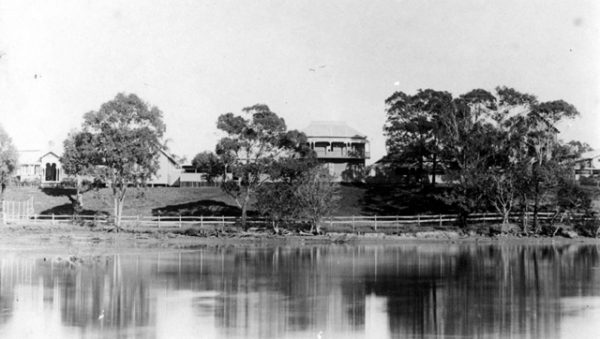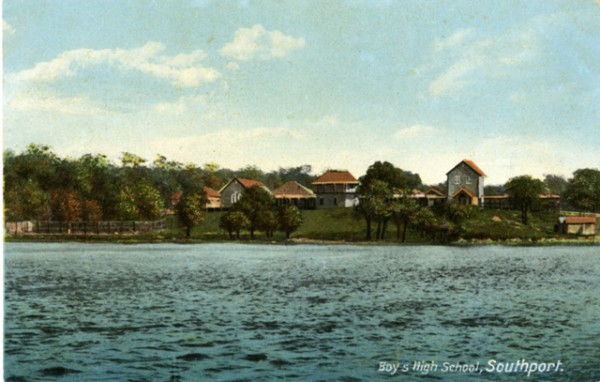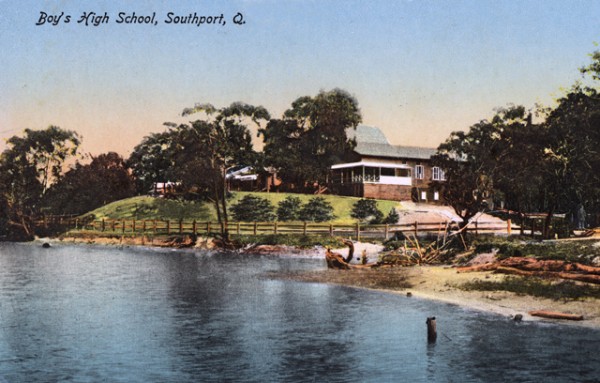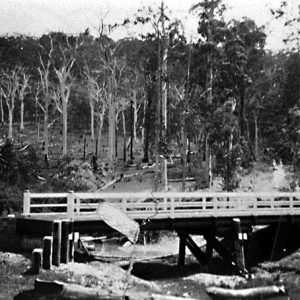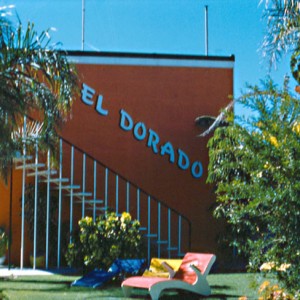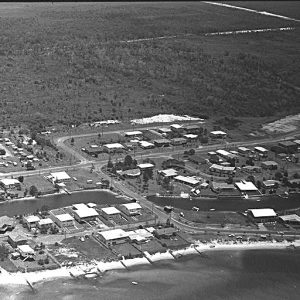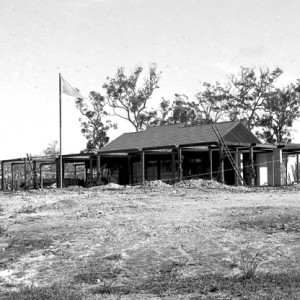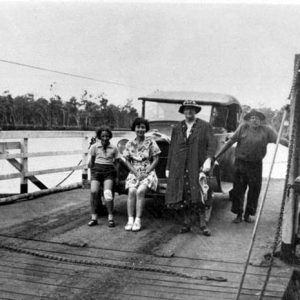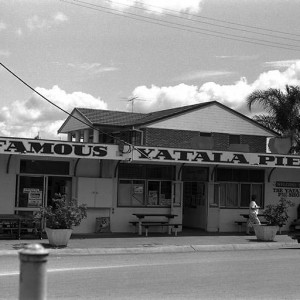
In the 1870s Henry Biggs acquired a 165 acre parcel of land on the western bank of the Nerang River near Gardiner’s Creek and built a number of buildings, including a house. Its situation gave the property not only a lovely view of the Nerang River, but its position high on the river bank and close proximity to the mouth of the river, also provided it with magnificent ocean views and cooling breezes.
Several years later a two storey tower was in place and the building had been extended with the original house becoming the southern wing of a larger residential complex built around a wide square. In 1885 Mr Biggs transferred the property to trustees John Barker, Nathaniel H. Howes and James Stodart and it became available for lease.
Between 1883 and 1888 the Governor of Queensland, Sir Anthony Musgrave, his second wife Jeannie Lucinda (nee) Field and their three sons, occupied the buildings as a summer residence on numerous occasions. Known variously as the Summer House, Summer Place, Summerplace and Government House, the property was the scene of numerous gubernatorial receptions and social events.
During Governor Musgrave’s holidays at Southport, the business of government continued and correspondence travelled regularly between the Summer House and Brisbane. Governor Musgrave’s choice of Southport’s calm waters and climate raised the profile of the region and encouraged affluent followers of fashion to spend their time in the new seaside resort.
The set of buildings occupied by Governor Musgrave and his family was also used by General Sir Henry Wylie Norman, who was the Governor of Queensland from 1889. However his preference for a holiday destination was different and he choose to spend time in Toowoomba. Lord Lamington, when he was appointed to the role, also spent extended periods holidaying in the Toowoomba region and, when visiting Southport with Lady Lamington, appear to have stayed in private homes or hotels rather than the Summer House.
Despite the Governors of Queensland and their families no longer regularly holidaying at Southport, over time other notable public figures were associated with the Summer House, including Hon. James Cowlishaw and Hon. Thomas Bridson Cribb.
In 1898, Isles, Love and Co. held an auction of furniture in Summer House which included items previously used by the Musgraves. The house continued to be used for social events, wedding receptions and accommodation and, in 1900, it was described as one of the most picturesque in the area. In 1902, amid concerns about the long term future of the house which was untenanted, Reverend Horace Dixon secured a long lease on the property to establish The Southport School, also known as TSS.
Over one hundred and forty years after it was built, the Summer House remains on its original site within the grounds of TSS. It is now known as Biddle House.
- The Southport School taken from across the Nerang River, circa 1920. Photographer unidentified
- Former Governor’s House at The Southport School, circa 1908. Photographer unidentified
Sources of Information and further reading
- “Early Settlers: Life of Henry Biggs.” (1925, November 2). The Brisbane Courier (Qld. : 1864 – 1933), p. 14. http://nla.gov.au/nla.news-article20973633
- Matthews, Dr Tony. Bearing the Palm: a century of education at The Southport School. Southport: The Southport School, 2000.
- “Mr. W.W.L. Stuart—Miss Salisbury.” The Queenslander (Brisbane, Qld. : 1866 – 1939) 19 Feb 1898: 383 Supplement: Unknown. Web. 9 Dec 2015. http://nla.gov.au/nla.news-article21445918
- “Southport High School.” The Brisbane Courier (Qld. : 1864 – 1933) 10 Jan 1902: 4. Web. 9 Dec 2015. http://nla.gov.au/nla.news-article19141446
- Chatelaines of Queenslands Government House (1932, June 12). Sunday Mail (Brisbane) (Qld. : 1926 – 1954), p. 16. Retrieved October 29, 2016, from http://nla.gov.au/nla.news-article97932355
- Obituary. (1888, October 13). Australian Town and Country Journal (Sydney, NSW : 1870 – 1907), p. 43. Retrieved October 29, 2016, from http://nla.gov.au/nla.news-article71103157
- SOUTHPORT SOCIAL. (1901, August 27). The Brisbane Courier (Qld. : 1864 – 1933), p. 6. Retrieved January 4, 2019, from http://nla.gov.au/nla.news-article19121563
- SOUTHPORT SOCIAL. (1900, June 4). The Brisbane Courier (Qld. : 1864 – 1933), p. 6. Retrieved January 4, 2019, from http://nla.gov.au/nla.news-article19050176
- OUR NEIGHBOURS. (1902, January 18). The Queenslander (Brisbane, Qld. : 1866 – 1939), p. 156. Retrieved January 4, 2019, from http://nla.gov.au/nla.news-article21619642
- COMPETITION LETTERS. (1900, August 4). The Queenslander (Brisbane, Qld. : 1866 – 1939), p. 193. Retrieved January 4, 2019, from http://nla.gov.au/nla.news-article18553576
- A NEW HIGH SCHOOL FOR BOYS. (1901, December 28). The Queenslander (Brisbane, Qld. : 1866 – 1939), p. 1231 (Unknown). Retrieved January 4, 2019, from http://nla.gov.au/nla.news-article21269633
- LEGISLATIVE COUNCIL. (1898, October 12). The Brisbane Courier (Qld. : 1864 – 1933), p. 4. Retrieved January 4, 2019, from http://nla.gov.au/nla.news-article3680432
- SOUTHPORT, SOCIAL. (1900, November 23). The Brisbane Courier (Qld. : 1864 – 1933), p. 9. Retrieved January 4, 2019, from http://nla.gov.au/nla.news-article19042774
